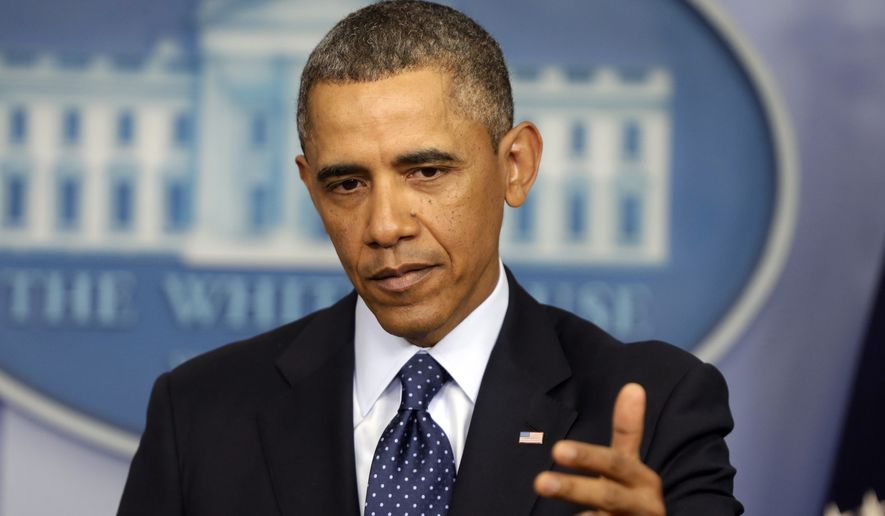Obamacare exchange customers are about to see spikes in their premiums, the Congressional Budget Office predicted Monday, saying insurers that offer plans are facing twin pressures from the government and the marketplace that will mean hikes of more than 8 percent a year through 2018.
Now in the second year of full operation, the exchanges are critical to the success of the law. The government is using tax subsidies to attract more customers to help offset costs for the rest of the system.
Nearly 11.7 million Americans bought plans on the exchange in the second enrollment period, Health and Human Services Secretary Sylvia Mathews Burwell announced Monday afternoon, hours after the CBO’s analysis was released.
The CBO said premiums for the key “benchmark” exchange plans will rise an average of 8.5 percent per year from 2016 to 2018, faster than the rest of the health care market.
The budget analysts said part of the reason is that the plans offered now are narrower than private plans and reimburse providers at lower rates. They said both trends probably will change, forcing insurers to raise premiums.
Overall, the CBO said, health care costs for the government and for private consumers are lower than expected just a few years ago. That means Obamacare is less expensive than predicted when the Affordable Care Act was enacted in 2010, though it’s covering fewer Americans than President Obama hoped.
Ms. Burwell said the law is working as intended, and she urged the Supreme Court not to invalidate the way the administration pays subsidies. Cutting off the tax payments would harm millions of Americans who “need, want and like” the plans they’ve bought, she said.
PHOTOS: Hand cannons: The world's most powerful handguns
“The simple truth is that millions of Americans in all 50 states rely on the Affordable Care Act for tax credits to buy insurance,” she said.
The justices last week heard oral arguments in the case of King v. Burwell.Plaintiffs said the administration is breaking the law by paying the subsidies to customers in states that rely on the federal HealthCare.gov exchange. The law says subsidies can be paid to customers in exchanges “established by the state.”
If the court rules against the administration, customers in two-thirds of the states would be cut off from subsidies, which would create a crisis for Congress and the White House.
Republican lawmakers are hoping to fill the void with a patchwork of proposals that keep health care coverage and financial assistance in place for Americans affected by the ruling, but only for a limited time as they forge a replacement to Obamacare ahead of a presidential election year.
Justice Samuel A. Alito Jr., a conservative who appeared ready to side with the plaintiffs, suggested that the Supreme Court could postpone the brunt of its ruling so subsidies are not cut off until the end of the year.
The nonpartisan Congressional Research Service said Monday that such a stay would be possible, as “Congress has specified that the court has the authority to fashion remedies that are ’just under the circumstances.’”
PHOTOS: Awesome rifles: The best and the baddest
But researchers also said a stay of the Obamacare ruling might not apply in this case because it is not clear whether lawmakers authorized the subsidies.
Michael Cannon, a health care policy director at the libertarian Cato Institute and architect of the legal theory behind the King challenge, said it would be strange for the court to declare the federal exchange subsidies illegal only to keep them alive several more months.
“That would be awkward, to say the least,” he said.
Ms. Burwell said she expects the administration to win the case and said opponents were trying to ruin the president’s signature achievement.
“The law is clear. The text and structure of the Affordable Care Act demonstrate that individuals in every state are eligible for tax credits,” she said. “Those who support this lawsuit believe that the law should be dismantled or repealed, and they are content to roll back the progress that we have achieved together.”
When the Affordable Care Act passed Congress in 2010 with only Democratic votes, Republicans said the plan was unworkable and too costly.
But the CBO said Obamacare is less expensive than anticipated, partly because health care costs overall aren’t rising as fast as they once were. That is benefiting private consumers, companies and the government.
Obamacare’s exchanges and other medical coverage under the overhaul will cost the government slightly more than a half-trillion dollars over the next five years, about $200 billion less than the $710 billion projected when the law was enacted.
“Although it is unclear how much of that slowdown is attributable to the recession and its aftermath and how much to other factors, the slower growth has been sufficiently broad and persistent to persuade CBO and [the Joint Committee on Taxation] to significantly lower their projections of federal costs for health care,” the CBO said in its report.
At the same time, Obamacare isn’t covering as many people as anticipated.
From October through Feb. 22, Ms. Burwell said, 11.7 million new and returning exchange customers bought plans. That was higher than the administration’s announced goal but below what budget analysts projected.
Of those 11 million using the exchanges this year, about 8 million will receive tax subsidies to help offset the costs, the CBO said.
The budget agency said it expects 21 million people to enroll in exchanges next year, which is also lower than initial projections.
The CBO said Obamacare, at its peak over the next decade, is projected to help ensure that 91 percent of Americans have health care coverage, leaving a significant number without coverage.
• Stephen Dinan can be reached at sdinan@washingtontimes.com.




Please read our comment policy before commenting.